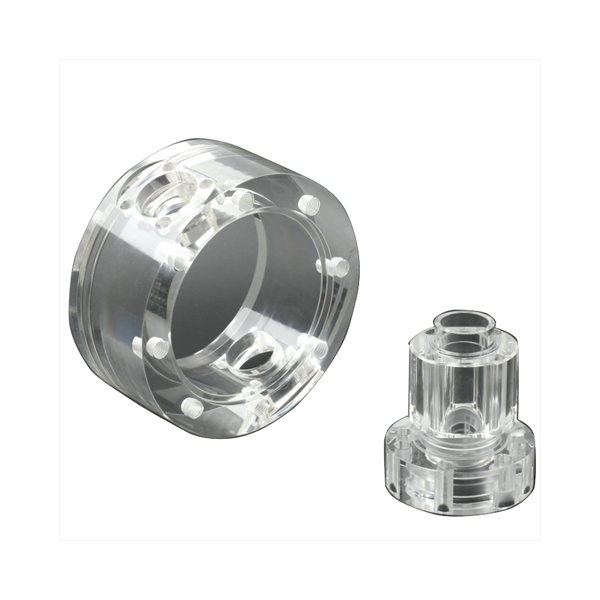CNC Lathe Machining Parts

CNC Lathe Machining Parts
-
Axis Configurations: 2-axis, 3-axis, and multi-axis CNC lathes
-
Accuracy: ±0.005 mm (micron-level precision)
-
Surface Finish: Ra 0.2 – 1.6 µm (as machined or polished)
-
Materials Supported: Aluminum, stainless steel, titanium, brass, copper, alloys
-
Batch Capabilities: Prototypes, low-volume runs, and mass production
-
Optional Treatments: Anodizing, plating, passivation, polishing
- Description
- Specification
- Application
- FAQS
CNC Lathe Machining Parts are used in many industries that require reliable, precise components. With CNC lathe technology, you can turn raw materials into accurate parts through automated and repeatable machining. This helps maintain stable quality while reducing the risk of human error during production.
These parts appear in a wide range of systems. For example, in automation equipment, you can apply them to actuators, mechanical arms, and alignment mechanisms. Their dimensional consistency supports smoother motion and long-term reliability. In aerospace applications, you often need tight tolerances for brackets, housings, or lightweight structural pieces, which CNC lathes can provide effectively.
Moving into energy systems, turning parts like flanges, bushings, and pressure connectors must fit precisely and hold up under demanding conditions. If you're working in marine environments, you may need corrosion-resistant components such as shafts or couplings, where surface finish and tolerance affect long-term performance.
In the automotive field, you can use CNC lathe machining parts in drive systems, engine blocks, or transmission parts. These parts need to work under stress while maintaining accurate fits and smooth operation. In medical devices, applications include surgical tools, implant-ready components, and equipment housings, where surface quality and dimensional accuracy directly affect functionality and safety.
You have a wide range of materials to choose from, including aluminum, stainless steel, brass, titanium, and engineering plastics. This flexibility allows you to match materials with different structural or environmental requirements. CNC lathe machining also makes it easier to shift between design updates or volume changes without causing delays.
Because of the digital control behind the process, you can adjust quickly to new design inputs or testing feedback. When your project demands precision, repeatability, and speed, CNC Lathe Machining Parts offer a practical and effective solution that fits many technical and commercial needs.
| Parameter | Value / Description |
|---|---|
| Material Options | Metals (stainless steel, aluminum, brass, copper, titanium), plastics (ABS, POM, Nylon) |
| Tolerance | Typically ±0.01 mm to ±0.1 mm, depending on material and part complexity |
| Part Size | Suitable for parts with diameters up to 300 mm and lengths up to 1,000 mm |
| Machining Methods | CNC turning, facing, threading, boring, drilling, knurling, and parting operations |
- Automotive:Precision parts such as engine components, shafts, gears, and bushings that require high strength and durability.
- Aerospace:Aircraft structural components, fasteners, actuators, and turbine parts that demand tight tolerances and lightweight materials.
- Medical Devices:Custom surgical tools, implants, diagnostic devices, and medical instrument components requiring high biocompatibility and precise machining.
- Electronics:Housings, connectors, and precision parts for consumer electronics such as smartphones, tablets, and laptops.
- Robotics:Precision mechanical parts, joints, actuators, and gears used in industrial robots and robotic arms for automation and assembly.
- Industrial Equipment:Components like valves, pumps, bushings, bearings, and other mechanical parts used in machinery and automation systems.
- Marine:Boat propellers, hull fittings, shafts, and hardware components designed to withstand harsh marine environments.
- Energy & Power:Custom parts for turbines, pumps, wind generators, and oil drilling rigs, ensuring high durability and efficiency in energy production.
Q1: What are CNC lathe machining parts?
They are precision-engineered components manufactured using CNC lathes, ideal for round and cylindrical designs.
Q2: What materials can be used in CNC lathing?
Common materials include aluminum, stainless steel, brass, titanium, and copper alloys.
Q3: How accurate are CNC lathe machined parts?
Our machines achieve tolerances as tight as ±0.005 mm.
Q4: Can you handle both prototypes and large-volume orders?
Yes, we support one-off prototypes, small-batch runs, and mass production.
Q5: Do you provide post-machining finishing services?
Yes, we offer anodizing, plating, polishing, and other finishing options.










